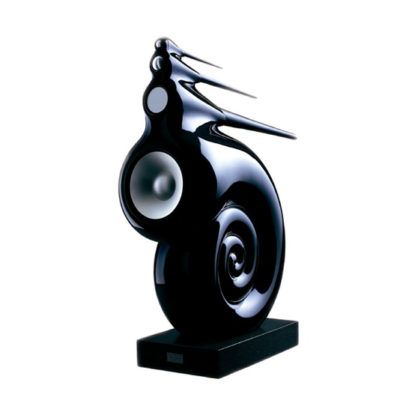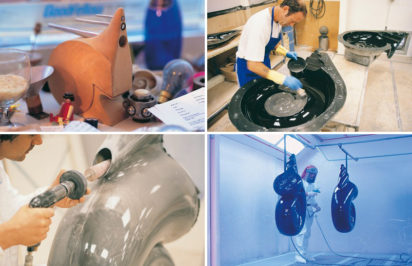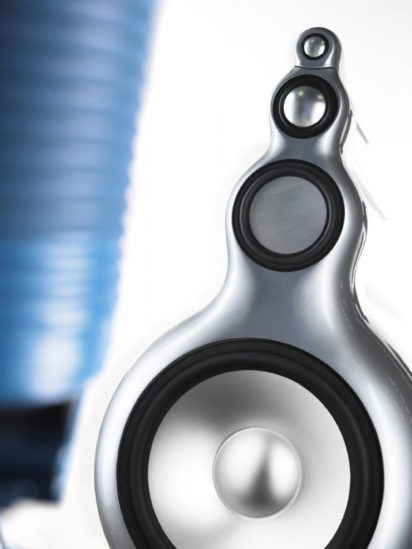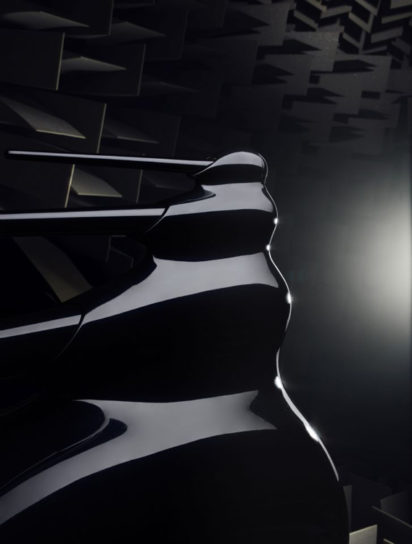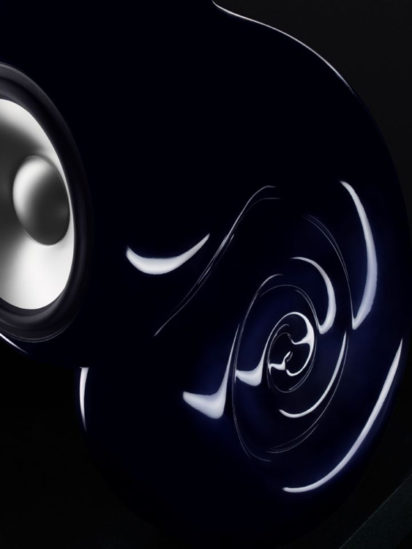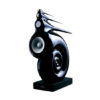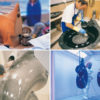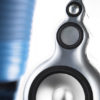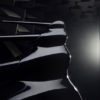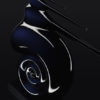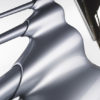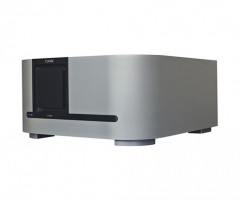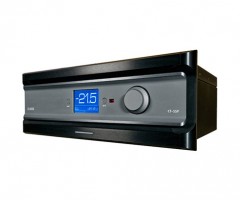- Deliver top performance
- Reliability in every installation
- ICTunnel™ actively regulates the amplifier temperature
Bowers & Wilkins Nautilus
$179,999
Briefed to stop at nothing in the quest for a perfect loudspeaker, our engineers arrived at a set of drive units whose tapering, tubular enclosures spirited away every trace of internal resonance.
Bowers & Wilkins | Nautilus Speaker
Now recognized as a design classic, the original Bowers & Wilkins Speaker Nautilus is not just our flagship product, but the very pinnacle of technological innovation to which all others must aspire. It is the result of a groundbreaking, five year research and development programme to achieve, as near as possible, the perfect loudspeaker. The Bowers & Wilkins Speaker Nautilus is recognised worldwide as an outstanding loudspeaker which continues to shape the direction of the audio industry to this day. Much sought after by cognoscenti, it has been unashamedly designed with the serious audiophile in mind, not only because of its size and shape but also because of its active design – the crossover network is positioned between the pre and power amplifiers.
Technologies
Nautilus
Nautilus™ symbolizes all the qualities of innovation, dedication and love of music which have inspired Bowers & Wilkins engineers, designers and production teams ever since our company was established over 40 years ago. The Nautilus offers a unique chance to hear music exactly as recorded: detailed, vibrantly alive, full of power and unhindered by speaker distortion or cabinet diffraction.
Aluminum Tweeters
Most Bowers & Wilkins loudspeakers use aluminum dome tweeters. The combination of lightness and rigidity they offer means that they capture the subtleties of music, such as delicate brush strokes across the surface of a cymbal with amazing accuracy. Our latest aluminium tweeters feature a ‘crowned’ voice-coil bobbin and a silver-plated pole piece, extending the bandwidth well over an octave above the limits of human hearing, and rendering a separate ‘super tweeter’ quite unnecessary.
Nautilus™ Tapering Tubes
Not all sound generated by speaker drive units is good sound. The kind that emerges from the back of a working driver, into a conventional box cabinet, can bounce around and make a mess of the good sound coming out of the front. Bowers & Wilkins’ trailblazing Nautilus™ speaker found a way around boxes. Tapering tubes filled with absorbent wadding soaked up the wayward sound energy and reduced resonances to an insignificant minimum.
Innovative Research
Nautilus story
Innovation has always been the hallmark of Bowers & Wilkins. And the five-year research project that led to Nautilus™ epitomises this commitment.
Breaking the mould
From the stepped baffle of the DM6 to the cool modernity of the Emphasis, Bowers & Wilkins’ policy has always been to explore every avenue in the pursuit of accurate sound. This has allowed our engineers to follow leads, which even if they ended in disappointment, added to our expertise. At one point our energies were concentrated on dipole or backless loudspeakers, where rearward-travelling sound could radiate freely away from the drive units. But despite a variety of inventive baffles listeners could always identify the cone materials used in the drive units. Then came the breakthrough. While working on prototypes for Nautilus™ the engineers experimented with a traditional shape: the plain, tapering horn. Only in this case, a horn which is used not to transmit sound but to absorb it.
Art of discovery
In an attempt to get rid of unwanted cabinet resonance around the upper midrange drive unit, Bowers & Wilkins engineers decided to use a rare earth magnet whose pole piece could be hollowed out to create extra space, freeing the path for rearward-travelling sound waves. But initial tests showed that the drive unit’s pear-shaped enclosure would then produce an unacceptably sharp peak in the response, known as a high ’Q’ resonance. By replacing the pear-shape with an inverted horn, the problem disappeared. The results proved remarkable. The combination of an acoustically transparent magnet and an exponentially tapered horn absorbs virtually all rearward radiation of sound – creating the nearest thing yet to an infinite baffle.
Learning from nature
After discovering the transmission-line principle for the top three drivers our engineers originally thought a closed box would be fine for the bass. But listening tests showed a discontinuity between the bass and the other three drive units. To match the sonic purity of the tweeter, the treble and the midrange driver, the bass needed a wave-guide pipe – and this created a dilemma. The low frequency requirement dictated a non-tapering pipe 300mm in diameter and three metres long – clearly an impractical solution. In their relentless pursuit of true sound, the research team came up with another of Bowers & Wilkins’ great technical advances. Experiments showed that a curled-up horn-shape would perform exactly as required but would occupy a much smaller volume than a straightforward pipe.
Craftsmanship
Bowers & Wilkins has been manufacturing Nautilus™ since 1993, and the painstaking process is a perfect example of our obsessive attention to detail.
Material perfection
Bowers & Wilkins’ search for the best possible quality in production means that we devote a great deal of time and care to specifying materials and components – and then to finding suitable specialists to make them. For the Nautilus™ body we engaged the services of Raceprep, a specialist company which is expert in the formulation of fibre-reinforced composites. Because of its complex shape, Raceprep engineers make the Nautilus™ shell almost entirely by hand, using a resin which has been identified by computer analysis as perfect for its purpose – ensuring maximum strength and durability. The same attention to detail has been applied to the finish for the Nautilus™ shell. Bowers & Wilkins’ paint and lacquer system is imported directly from Germany, where it is supplied only to the leading names in the luxury car industry, such as Porsche and Mercedes Benz.
Sound work
Over the years, Bowers & Wilkins has built up a team of highly skilled people, who use a mix of hand-assembly techniques and semi-automatic production processes to make our drive unit components – a combination which gives us speed and flexibility when it comes to producing new prototypes or making complicated parts. It also means that we can achieve world-class levels of quality in manufacturing. For example, all Bowers & Wilkins voice coils are wet wound with high temperature resin and then baked in a special oven to ensure enhanced performance and durability. ’Wet-winding’ is a time-consuming process and some manufacturers see it as uncommercial and unnecessary. At Bowers & Wilkins, we believe it to be an essential step in achieving the kind of quality and reliability for which our loudspeakers are renowned.
A final audition
Our commitment to the best means that quality procedures are built in to all stages of production of a Bowers & Wilkins loudspeaker, from individual testing of each bought-in component to rigorous checks at every stage of our own production line and a final test of every finished assembly. Every Nautilus™ loudspeaker is auditioned before it receives its final seal of approval. By the end of the process, everyone who has contributed towards making, testing and checking our loudspeakers is named on the Bowers & Wilkins quality certificate. Documents accompanying the Nautilus™ include performance plots for all four drive units, showing their near-field response and their deviation in sound pressure levels from the laboratory standard. The overall acoustic deviation for the Nautilus™ is less than half a decibel and this is corrected by the electronic crossover.
Related Products
-
Classe | Amplifier – CA-M300
Buy Now$11,999
$5,750
-
Classe | Surround Sound Processor – CT-SSP
- Ultimate surround sound processor
- Highest quality level
- Texas Instruments processors


